eISSN: 2469-2794


Research Article Volume 8 Issue 3
1State Forensic Science Laboratory, Tripura, India
2Tripura University (A Central University), Tripura, India
Correspondence: Dr Sabyasachi Nath, State Forensic Science Laboratory, Tripura–799015, India
Received: May 06, 2020 | Published: June 26, 2020
Citation: Nath S, Banik D, Pratihari HK, et al. Study on signature of hair for identification of two major ethnic groups. Forensic Res Criminol Int J. 2020;8(3):122-126. DOI: 10.15406/frcij.2020.08.00316
Studies on hair have important forensic significance since hair is the most common type of physical evidence detected in crime like murder, rape, burglary even poaching related cases and other ways also. The examination of hair helps to establish the origin, race, sex, age etc. and also to link evidence in different crime cases. In the present study, an effort has been made to create a database of two ethnic groups considering various morphometric parameters of scalp hair using light microscopy, SEM as well as conventional methods. The database of two major groups (Caucasian and Mongolian) of the state Tripura, North-Eastern region of India, will help the researchers, forensic experts, biologists, dermatologists and legal experts working in different fields.
Keywords: hair, morphological, microscopic, SEM (scanning electron microscopy), race, sex, forensic evidence
Hair is an epidermal derivative of mammalian skin that grows out from hair follicle. The shaft of hair is composed of three layers viz. cuticle, cortex and medulla.1 The cuticle is the outer covering of the hair shaft
composed of thin non-pigmented transparent scales which are attached with the cortex at their lower margins and its thickness is measured under different scales.2 In the cortex, long keratinised fibrils are found arranged parallel to the shaft of hair and are surrounded by amorphous proteins known as matrix. Pigment distribution in the cortex also includes various characteristic patterns. In human hair, the pigment is usually distributed near the periphery, but also found uniformly along the length of the cortex.3 The medulla is the central core of the shaft of hair. The diameters of medulla vary showing different characteristic features useful for the study.4
The medullary index measures the diameter of the medulla relative to the diameter of the hair shaft and is normally expressed as a fraction. In case of human, the index generally has a value less than 1/3; for most of the other animals, it is 1/2 even more. Further, presence and appearance of the medulla vary from individual to individual and even in hairs of the same person. Human scalp hair usually does not show any medulla or
has fragmented ones. They rarely show continuous medullation; but exception is found among the Mongoloid race having continuous medullae on their scalp hair.1
The study of hair has wide application in the following ways:1–8
The objective of the present study is to create a database by comparing various morphometric parameters such as scale count, cuticle thickness, medullary index, scale margin, scale distance, scale pattern, shaft cross-section shape, pigment distribution of scalp hair of two ethnic groups (Caucasian and Mongolian) of the state Tripura, North-East India, to identify race, sex etc. from the sample hair of hundred donors.
Samples of scalp hair were collected from volunteer students of University whose hair was not chemically treated (dyed, bleached, straightened). A total of 100 volunteer’s scalp hair samples, each 25 from North-East Indian Caucasian male and female and each 25 from Mongolian male and female, were collected for the study. An average of 20 hair samples per individual were collected by pulling from different areas of head and packed in separate envelopes. All the hair samples collected from the donors were properly coded. Thereafter, the hair samples were treated with shampoo followed with repeated washing with distilled water for the study.
In order to observe cuticular pattern, a cast of hair was made on cellulose-acetate sheet using acetone soaked cotton. The impression of the scale pattern made on cellulose acetate sheet was observed under suitable magnification (100x-400x). The cross sections of hair samples were made using paraffin block and the cut sections were de-waxed using xylene. The prepared slides were observed under microscope (Leica DME, Germany). Medullary Index and scale count were measured using the following formulae:3
The results of hair analysis on different parameters of both sexes of the two ethnic groups shown in Table 1 and Figures 1–10, are very much useful to differentiate hair samples for forensic examination and other purposes.
Parameters |
Caucasian |
Mongolian |
||
Male |
Female |
Male |
Female |
|
Scale count (No) |
202±2.64 |
202±4.08 |
210±3.03 |
212±2.85 |
Cuticle thickness (µm) |
0.13±0.004 |
0.16±0.004 |
0.12±0.004 |
0.21±0.006 |
Medullary index |
0.116±0.016 |
0.114±0.016 |
0.105±0.018 |
0.121±0.016 |
Scale margin |
All crenate |
Crenate=44% Smooth=56% |
All crenate |
Crenate=68% Smooth=32% |
Scale distance |
Near |
Near |
Near |
Near |
Scale pattern |
Regular |
Regular |
Regular |
Regular |
Cross section shape |
All oval |
Oval=76% Round=24% |
All oval |
Oval=44% Round=56% |
Pigment distribution |
Peripheral=75% Uniform=25% |
Peripheral=72% Uniform=28% |
Peripheral=80% Uniform=20% |
Peripheral=88% Uniform=12% |
Table 1 Various morphometric parameters of scalp hair analysis from both sexes of the two racial categories
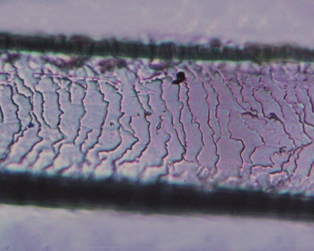
Figure 1 Crenate scale margin of scalp hair found in male individuals of both Caucasian and Mongolian races.
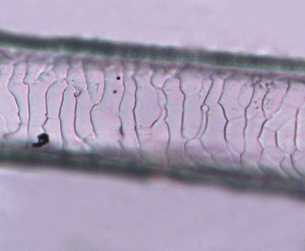
Figure 2 Smooth scale margin of scalp hair found in male and female individuals of both Caucasian and Mongolian races.
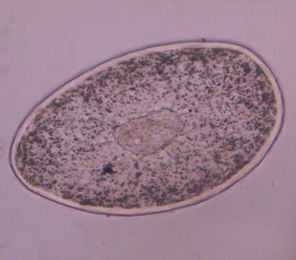
Figure 3 Oval cross section of scalp hair found in male individuals of both Caucasian and Mongolian races.
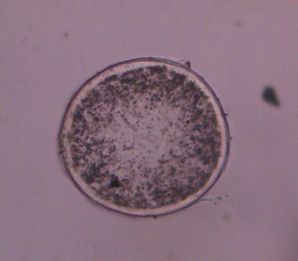
Figure 4 Round cross section of scalp hair found in male and female individuals of both Caucasian and Mongolian races.
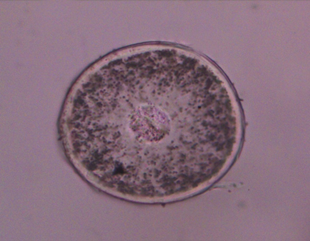
Figure 5 Peripheral pigment distribution seen in scalp hair of most of the Caucasian and Mongolian races of both sexes.
Hair is one of the most important physical evidence encountered in a wide variety of crimes and play a crucial role in forensic investigation.5,6 Detection of hair at the crime scene is considered strong physical evidence against the criminal. Microscopic examination of hair helps to characterize its morphological features for identification of species and also reveals information about race, sex and site of body which is very useful to link the offender with the crime. Further studies on three different layers of hair like outer cuticle, inner medulla and intermediate cortex, are also helpful for hair characterization.7
In the present study, the results of cuticle thickness and scale count show some differences among individuals of both sexes of the two races. Similarly the results of scale margin and cross section shape reveal some variation between the two sexes of both the races, but there is no significant difference in the study of scale distance, scale pattern and medullary indices among the individuals of two racial categories. Besides, the other special characteristics like cosmetic treatment (dye, bleach), structural abnormalities of the shaft etc. also provide very important clues in hair identification. All the features together provide useful discrimination whether a sample hair originates from a specific individual.8
In the present paper, studies on hair of two ethnic groups (Caucasian and Mongolian) with limited volunteers provides some distinguishing features for identification of race and sex and requires further study of a large number of inhabitants of the region to build a concrete database. The database of hair of both the groups would help the forensic experts, biologists, dermatologists, researchers and legal experts working in different fields.
The authors are thankful to the Professor in-charge of the Central Instrumentation Unit, Tripura University for extending support to conduct SEM study.
The author declares there are no conflicts of interest.

©2020 Nath, et al. This is an open access article distributed under the terms of the, which permits unrestricted use, distribution, and build upon your work non-commercially.